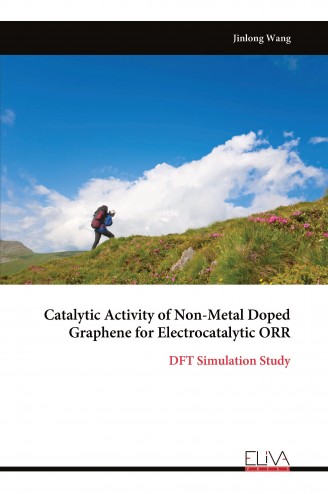Descripción
This book employs DFT to study the electrocatalytic ORR activity of nonmetal-doped graphene. Results show ORR intermediates (O₂, OOH, O, OH) preferentially adsorb on positively charged sites with large atomic magnetic moments, with adsorption strength correlating to these properties. Most dopants (B, P, As, Si, S) lose electrons, becoming positively charged with small magnetic moments, serving as primary active sites. Highly electronegative dopants (N, O, F, Cl) gain electrons, making adjacent carbon atoms the active sites, potentially creating multiple catalytic centers. Adsorption strength directly affects activity: weak adsorption hinders *O₂/*OOH hydrogenation, while strong adsorption limits *O/*OH hydrogenation, possibly favoring 2e⁻ H₂O₂ formation over the 4e⁻ pathway. By analyzing Gibbs free energy changes, the rate-determining steps were identified. The As-N₄ configuration shows exceptional stability and activity, with an overpotential of 0.53 V. Dual/multiple doping effectively tunes graphene’s electronic structure, optimizing intermediate adsorption and enhancing performance. Optimal adsorption energies were determined: O₂ (−0.55 eV), OOH (−1.81 eV), O (−3.33 eV), OH (−2.42 eV). Near these values, ΔG at 1.23 V approaches zero, enabling prediction of rate-limiting steps. This validated method aids in screening high-performance ORR catalysts. In summary, this work provides key insights for improving nonmetal-doped graphene’s ORR activity and designing advanced electrocatalysts.

